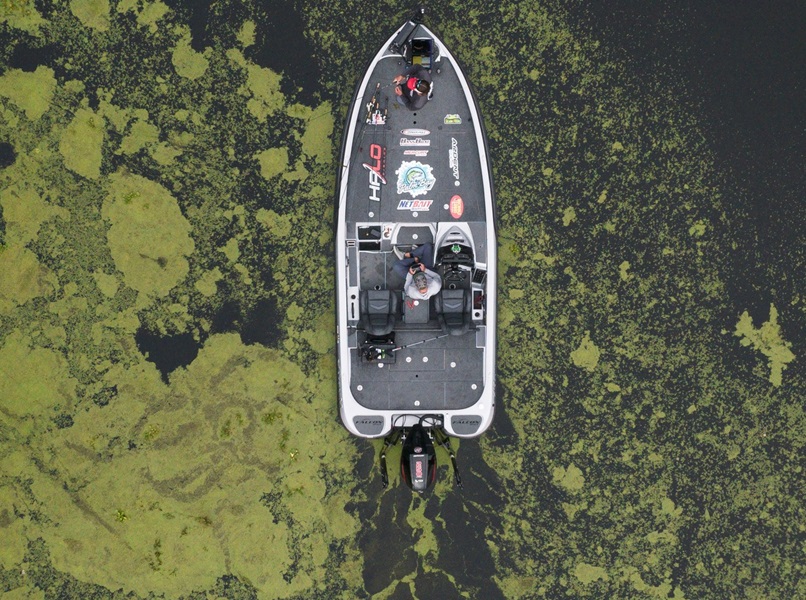
It's fall, and there are many ways to catch bass. Your approach will vary based on the lake you are fishing, but according to Major League Fishing's host, JT Kenney, who also hosts The Fishin' Show With JT Kenney, some themes are nationwide.
Forage Thoughts
Much of the talk is centered on shad-eating bass during the fall, and it's a significant factor, but bass will eat anything they find, and you don't always have to imitate a shad to catch a bass. This is why Kenney still mixes in baits that mimic bluegill, including throwing a frog around the grass.
"Down here in Florida, the bass still key on shad in the late spring and fall as they do in the rest of the country, but a bluegill is something a bass will always eat," he said. "Biologists say bluegill can make up 75 percent of the diet, so they will always eat them, especially in matted grass."
The type of grass also varies by region, and Kenney will look for something slightly different depending on where he's fishing during the fall.
"Grass that mats up without being too thick is always going to be good, and that's when I'm looking for milfoil and duckweed because bass can easily bust through it for a frog," he said. "Hydrilla is a little too thick at times, so generally, I'm looking for the holes in the grass, but there's a narrow window when it recedes some in the fall where it can be good with a frog on top of the mats. The great thing about it this time of year, when the water starts to cool down for the first time all year, you can catch them all day on a frog."
Fall Froggin'
Each day he heads out this time of year, he will have two different frog types ready, a Snag Proof Smashmouth, which is a popping version, and the Scum Frog Launch Frog, a more traditional walking-style frog.
"Some days, they want one or the other, and I don't know why, but I wish I did," said Kenney. "That's why I always have both ready to go; some days, they will bite one much better. One of the things I like about the Launch Frog is that it's heavier with the tungsten weight transfer system, so it casts very far, and the added weight makes it better to push down on the top of the mat."
Kenney keeps his frog colors simple and pays attention to the color on the underside. He also selects a rod that allows him to work the baits effectively.
"One of my favorite colors is called sloppy toad, which looks like a toad on the top, but the bottom looks more like a bluegill," he said. "I fish them on a 7-foot, 2-inch heavy Halo Rods BB Froggin rod. We built that rod with good casting accuracy but enough strength to handle big fish. It's also a good flipping rod if you don't want to buy a specialized frog rod."
Going Old School in the Shallows
Another dynamite technique Kenney uses every fall is a Carolina-Rig, which he believes some anglers overlook. He'll also fish it much shallower than most.
"Most of the time when you think of the Carolina-Rig, it's thought of a deeper water technique in 16 or 18 feet of water," Kenney begins. "It's also excellent in shallow water, and I catch a lot of fish with a Netbait Magnum T-Mac dragging in 3 to 5 feet of water. Not many anglers do that, and instead of using a big 1-ounce weight, all you need is a 5/16-ounce."
Where he prefers to drag his rigs depends on the fishery, and current is always a plus. "Shell beds are a big deal here in Florida, especially when we get some runoff from storms," he said. "Pea gravel is always a good place to look in other parts of the country. When the fish are bunched up in these areas, there's nothing better than a 'C-Rig.'"
Kenney opts for a 7-foot, 5-inch medium-heavy Halo Rods KS2 Elite for his Carolina-rigs. "It's the right length to manage a longer leader," he said. "It's great for fishing a Carolina-rig, but I use it for many other things. It handles pitching a stick worm or Texas-rig very well."
When much of the bass fishing world is doing things to imitate shad-eaters, going with a frog and Carolina-rig can also produce. It's part of Kenney's plan when fishing in Florida, but it will work everywhere.


 Advertising
Advertising